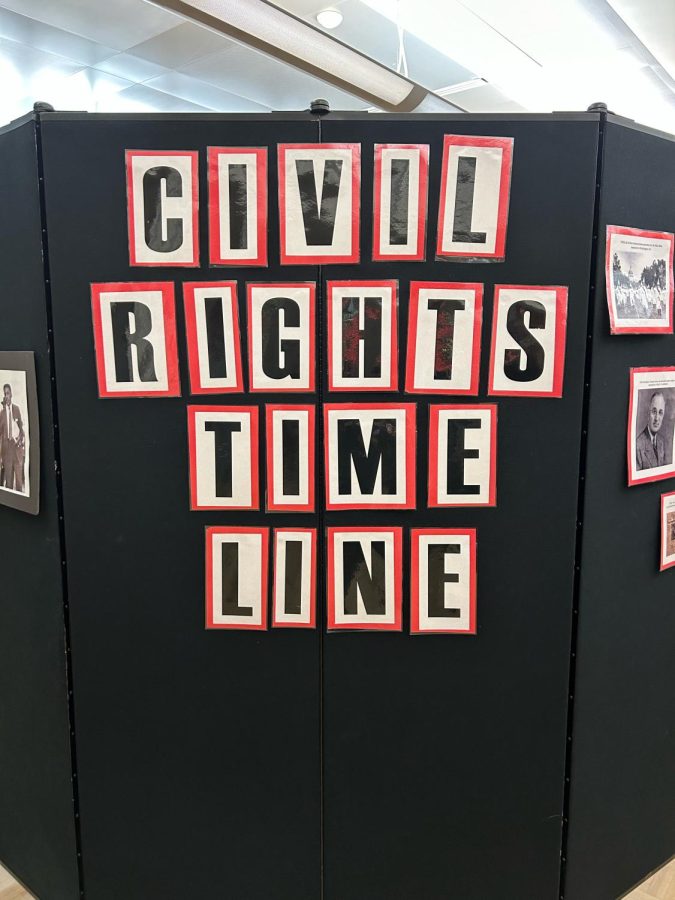Black History Month recognized by DEC exhibit
February 15, 2023
The deafening silence of contemplation filled SURC 137 A & B as visitors wandered through time at the Black History Month exhibit from Feb. 8-10.
Black History Month has celebrated the contributions that African Americans have brought to the U.S. since Congress passed a 1986 law instating Feb. as Black History Month.
Paige Hall works for the DEC, where they showcased information about Black History Month and the civil rights movement.
The exhibit also had books on display like “The Life and Pilgrimage of Jesse Jackson” by Marshall Frady, “COLORBLIND” by Time Wise and “How to be an ANTIRACIST” by Ibram K. Kendi, which can be checked out in Brooks Library.
Timelines were featured in the exhibit, including a civil rights timeline that dated back to 1500 B.C. and showcased the development of the African American community.
The Black Panther’s 10 point program
The exhibit featured information about the Black Panthers, a civil rights group with an ideology for self-defense, specifically against police brutality.
A part of the exhibit was the Black Panter’s 10-point program, which shared their operations and what they believed in.
The 10 points were: we want freedom, we want full unemployment for our people, ending the robbery by the capitalists in the Black community, decent housing fit for the shelter of human beings, education for the people that exposes true nature, black men to be exempt from military service, immediate end to police brutality, freedom of all black men in federal, state and county prisons.
According to the exhibit, The Black Panther party also wanted land, bread, housing, clothing, justice and peace.
Jim Crow laws
The DEC also featured a display of Jim Crow laws in the United States. The Jim Crow laws legalized segregation in the U.S.
According to archive.gov, segregation laws first appeared on a mass scale after the landmark 1896 Supreme Court case Plessy v. Ferguson, where Homer Plessy, a mixed race man, tried to board a whites only train car. This court case is also notable because the court’s decision was worded as “separate but equal.”
The exhibit said that Washington in particular had three major aspects of Jim Crow that were notable: the prohibition of marriage, restrictive housing laws and a discriminatory code of ethics for realtors in Seattle.
According to the exhibit, the Capitol Hill and Broadmoor areas of Seattle passed municipal laws in the 1920s stating no part of the properties in the area “shall ever be used or occupied by any Hebrew or any person of the Ethiopian, Malay or any Asiatic race.”
This mindset continued into the 1950s, with realtors sworn to a code of ethics that kept people who “will clearly be detrimental to property values” from buying homes in certain neighborhoods.


